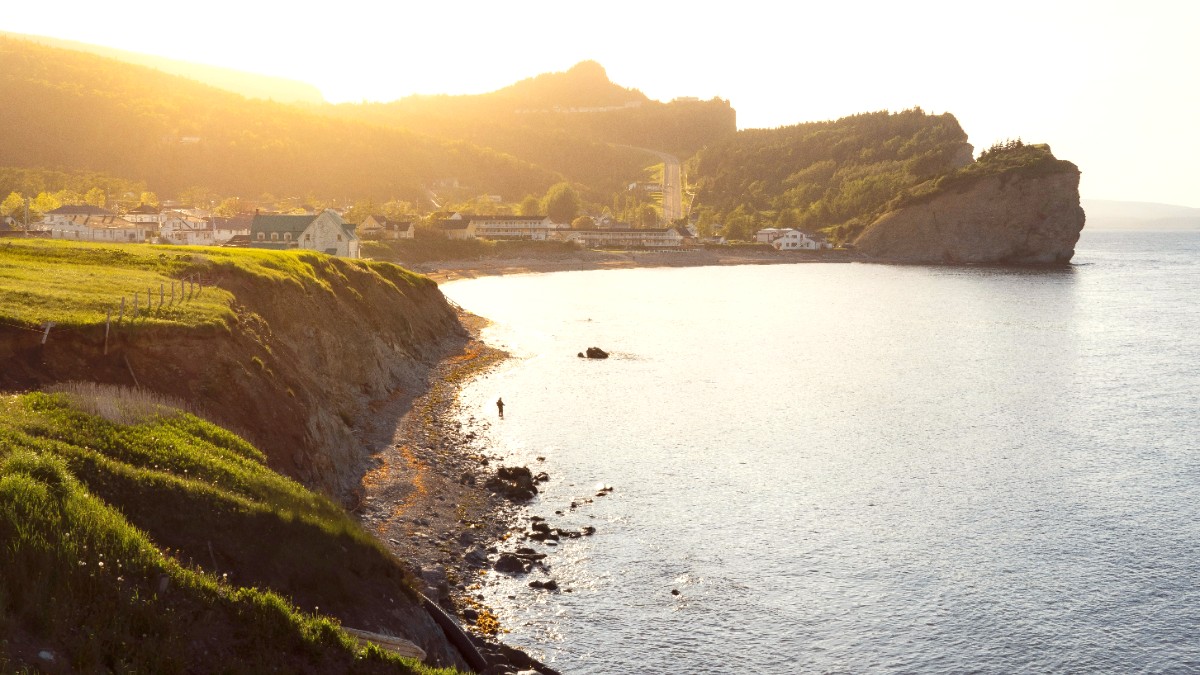
Canada
The Gaspé Peninsula presents a landscape shaped by ancient geological forces and the powerful movements of the Atlantic Ocean. Visitors often mention feeling immersed, connecting with nature in a profound way. The air here feels crisp, carrying the scent of salt and pine. Sounds of crashing waves mingle with the calls of seabirds. Travelers find themselves drawn to the region for its iconic landmarks, like the famous Percé Rock, a natural wonder that dominates the seascape. Beyond its well-known features, the peninsula holds countless quiet coves, hidden waterfalls, and trails winding through serene forests.
This guide will aid your visit, making sure you gain the most from your time in this remarkable corner of North America. It seeks to provide practical advice, insider insights, and inspiration for an unforgettable journey.
The Gaspé Peninsula truly presents an one-of-a-kind travel experience, combining outdoor pursuits with cultural discovery in a setting of unmatched natural beauty.
The Gaspé Peninsula occupies the southeastern portion of the Canadian province of Quebec. It stretches into the Gulf of St. Lawrence, forming a natural boundary between the vast St. Lawrence Estuary and the open Atlantic. It is shaped like a vast, irregular boot pointing eastward into the sea. Its northern edge faces the St. Lawrence, while its southern coast borders Chaleur Bay, which it shares with New Brunswick.
The interior of the Gaspé features the Chic-Choc Mountains, a northern extension of the Appalachian range. These mountains display a rugged beauty, with peaks over 1,000 meters, including Mont Jacques-Cartier. This mountainous spine shapes the peninsula's climate and ecosystems. Rivers carve their way from these mountains, flowing into the St. Lawrence and Chaleur Bay, famous for clear waters and abundant Atlantic salmon.
Characterized by dramatic cliffs and strong currents.
Features the iconic Percé Rock and Forillon National Park.
Along Chaleur Bay, with warmer, calmer waters and appealing beaches.
An 885-kilometer scenic loop guiding travelers.
A journey along this route offers comprehensive exploration of the peninsula's varied landscapes.
Long before Europeans arrived, the Mi'gmaq and Maliseet First Nations inhabited this land. Their cultures had a deep connection with the region's abundant natural resources. They lived off the sea and forests, gaining extensive knowledge of the land. Their spiritual connection to the territory and traditional ways of life continue as a foundational part of the peninsula's heritage.
European contact began in 1534 when Jacques Cartier, a French explorer, landed at Gaspé Bay. He claimed the territory for the King of France by erecting a cross. This event marked a pivotal moment in Canadian history, often seen as the birthplace of New France. For centuries, the peninsula became a focal point for the lucrative cod fishing industry.
Fishing stations, like the one at Paspébiac, grew into significant commercial hubs, influencing the architecture, customs, and demographics of coastal communities. The Site historique national de Paspébiac now preserves this important chapter, allowing visitors to step back in time and experience the daily life of a 19th-century fishing complex.
The Seven Years' War and subsequent British conquest of New France brought changes. The Battle of the Ristigouche in 1760, the last naval engagement between France and Great Britain for control of North America, happened in Chaleur Bay. After the American Revolution, Loyalists moved north, settling in parts of the Gaspé and contributing to its cultural mosaic. Waves of Irish immigrants also found homes here, notably in the Bonaventure River Valley. Their influence remains evident in the region's names, traditions, and the presence of English speakers alongside the dominant French-speaking population.
The Gaspé Peninsula presents a comprehensive Canadian experience, blending spectacular natural beauty with a rich cultural fabric. This destination is for travelers who seek fresh air, wide open spaces, and an authentic connection with local life. Imagine dramatic coastal drives where towering cliffs meet the churning sea, contrasted by serene inland forests and clear, winding rivers. This region presents a distinct facet of Quebec, focused on the raw power of nature and the enduring spirit of its communities.
Expect to spend ample time outdoors. The peninsula hosts two national parks, Parc National de Forillon and Parc National de la Gaspésie, both with extensive opportunities for hiking, wildlife viewing, and immersing yourself in diverse ecosystems. Water activities are also prominent, with whale watching tours a highlight.
Forillon offers coastal drama. Gaspésie National Park has mountainous interiors with alpine tundra.
Tours from Percé or along the St. Lawrence River. Kayaking, canoeing, and world-class salmon fishing.
French is the main language. Explore historic sites and artisan shops. Fresh seafood is a culinary highlight.
Accommodation options span rustic campgrounds, cozy bed and breakfasts, and modern hotels. A rental car is the preferred travel method.